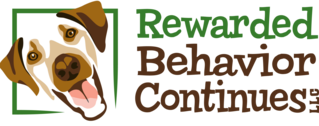Something Big Happened in Dog Training

Have you heard the old joke “The only thing two dog trainers agree on is that the third one is doing it wrong?” Guess what? It’s time to put that tired old joke to rest. Bigtime.
In September, 2018, three of the most respected professional training organizations came together to *jointly* adopt and announce Standards of Practice and Code of Conduct. The Certification Council of Professional Dog Trainers (CCPDT), the Association of Professional Dog Trainers (APDT), and the International Association of Animal Behavior Consultants (IAABC) are part of this groundbreaking statement of unity among professional organizations. Why the change and why is this groundbreaking?

THE WILD WEST OF DOG TRAINING
The model of dog training is changing for the average pet owner. “Back in the day,” when I wanted to train my dog, I went to the local obedience club. Local clubs are generally made up of a group of dog fanciers with an interest in training. They train as a hobby. They often compete in obedience and other sport dog competitions like rally, agility, tracking and so on. In the clubs I am familiar with, many of the instructors volunteer to teach classes that are offered to the general public. Clubs often offer basic obedience, Canine Good Citizen preparation and testing, puppy and sport dog classes. These are wonderful places to learn from experienced competitors and learn about the many fun activities you can do with your dog. They are also places that foster camaraderie and, if you’re lucky, lifelong friendships.
As pets have become a more important part of our lives, the “profession” of dog training emerged. People started training dogs full-time for a living. We spend a lot of money on our pets and training and containment franchises started appearing on the training landscape. Behavioral “colleges” were created, professional organizations formed, and information on the science of animal behavior became more readily available to everyone because of the Internet and social media.
The past few decades, dog training exploded like the Wild West: a lot of growth and expansion with many new people entering unfamiliar territory. The expansion is exciting, but what has evolved is an unregulated profession. And, it’s a “buyer beware” situation for pet owners. An unknowing pet owner could be paying someone who literally has no understanding of the science of how dogs learn, or someone who recommends tools or training that actually *harm* their dog, or a knowledgeable and skilled “hobby” trainer. Can you imagine paying a plumber and having him make your problem worse? Or hiring an accountant who does accounting as a “hobby?” I view the joint adoption of the Standards of Practice and Code of Conduct as a giant leap forward for dogs, their owners, and the profession of dog training.

WHY DOES IT MATTER?
Science has shown us there are only two ways to teach dogs new behavior. You can use things they’ll work for or things they’ll work to avoid. Let’s take the behavior of “sit.” There are a lot of different ways to teach a puppy to sit. Some common methods follow.
- Push on his back end until he sits. When he sits, stop pushing.
- Pull up on the leash. When the puppy sits, take the pressure off the leash.
- Add an electric shock/tap/stim via a collar and remote. When the puppy sits, stop the shock.
- Put a treat near your puppy’s nose. Lift the treat upwards and back. When the puppy sits, give him the treat.
- Wait until your puppy sits. When he sits, give him a treat (use a marker or not).
- Notice when your puppy begins some of the things that lead to sitting (lifting his nose up, shifting his weight back). Give him a treat when those things happen and built towards an actual “sit.”
Those are just some things that will result in your puppy sitting. I’m sure we could come up with more, including using play (tossing a ball, tugging or something else your puppy really likes) and other things he will work for and other things he will work to avoid (ear pinch, body pressure, raised voice). The laws of how animals learn are as real as the laws of gravity. The laws of learning tell us there are only two ways to teach new behavior: “work for” and “work to avoid.” There are other ways to impact behavior, but we’ll save those for another post.
By adopting LIMA (remember that means Least Invasive, Minimally Aversive), it means we will choose to use things the puppy will work to obtain, not work to avoid. In our oversimplified example, if a puppy will work for a treat or the opportunity to play to learn to sit, we should use that *before* things the puppy will work to avoid – like shock or body pressure. Here’s the rub: a trainer with good technical knowledge, mechanical skills and the ability to create training plans, will almost always be able to teach your puppy or dog new skills without resorting to things he’ll work to avoid.

DO THE ENDS JUSTIFY THE MEANS?
Imagine this. A newly captured seal, part of an arctic rescue effort, sits at the back of his enclosure. He’s trembling, shut down, and terrified. Someone walks in with a cattle prod and applies an electric shock to the seal to get him out of the cage so it can be cleaned. Can you imagine what you would feel if you saw a video clip of that on the news or social media? Now imagine that is a scared dog instead of a seal. And a “trainer” put a shock collar on that dog at a shelter to get him out of his run so it could be cleaned (true story). You can be the dog left that run when shocked, but at what cost? The people in charge of that dog’s care were concerned about his welfare. They “tried everything” to get him out of his kennel. But they were not educated, professional, skilled dog trainers. They were not aware there were other, less intrusive ways to get the dog out of his run. I assume neither was the trainer that “helped” them. Do you think that dog will be more afraid or less afraid when a person approaches his kennel? How do you think this will affect his ability to settle into someone’s home as a pet?

THE EVIDENCE IS IN AND THE PROFESSION SAYS “NO!”
The American Veterinary Society of Animal Behavior issued a position statement against the use of punishment-based training. It says, in part,
“ AVSAB’s position is that punishment1 (e.g. choke chains, pinch collars, and electronic collars) should not be used as a first-line or early-use treatment for behavior problems. This is due to the potential adverse effects which include but are not limited to: inhibition of learning, increased fear-related and aggressive behaviors, and injury to animals and people interacting with animals.2 “
You can read the entire position statement here .
HOW DOES AN OWNER CHOOSE?
There are many good articles on how to choose a trainer. Here is a simple starting point for your current or potential trainer. Ask them if they are familiar with LIMA. If he/she can’t tell you what LIMA is, find a new trainer. If your new trainer starts out with tools that cause your dog pain, discomfort (prong, shock/e-collar, choke chain), or work based on startle/fear (throwing things, air horn, spray bottle), find a new trainer. If your trainer tells you that you have to be dominant over your dog (dominance theory has been dis-proven for a while now), find a new trainer.
SO WHAT WAS ANNOUNCED?
“The leadership of the International Association of Animal Behavior Consultants (IAABC), the Association of Professional Dog Trainers (APDT), the Certification Council for Professional Dog Trainers (CCPDT) are pleased to announce the adoption of a Standards of Practice, a unified code of conduct, and code of ethics.
Strong professional ethics, education, and expertise within our profession are crucial to the wellbeing of the animals and humans we serve. The Standards of Practice is a set of cross-association guiding principles that will allow practitioners to understand what it means to be a competent, ethical professional in our field, and offers recourse to those rightfully demanding excellence in the field.
These shared standards provide a framework of principles, professionalism, skills, and values in positive reinforcement-based training. As members/certificants, each individual will undertake the following as a condition of membership/certification:
- To understand and promote Least Intrusive, Minimally Aversive (LIMA) training and behavior work
- To continue professional development by reading relevant material; attending conferences, workshops and seminars; and pursuing other educational opportunities
- To review and understand source material and academic texts for information
- To abstain from representing training and behavioral information as scientific, unless the information is derived from peer-reviewed and published research
- To refrain from offering guarantees regarding the outcome of training and behavior work
- To always maintain professionalism through:
- Providing services honestly
- Treating animals and clients respectfully
- Valuing and preserving the privacy of clients
- Maintaining professionalism with colleagues and other professionals.
More about LIMA
LIMA does not justify the use of punishment in lieu of other effective interventions and strategies. In the vast majority of cases, desired behavior change can be affected by focusing on the animal’s environment, physical well-being, and operant and classical interventions such as differential reinforcement of an alternative behavior, desensitization, and counterconditioning.
By defining LIMA, along with the Humane Hierarchy to refer to when struggling or frustrated in a training scenario, we provide a structure of ethical guidelines to avoid undue stress and discomfort to our human and animal learners. Use of LIMA shows trainers/behavior consultants how to avoid using punishment, instead of simply requiring that they do so without help in achieving that goal. We strongly feel that LIMA is the most in-depth, answerable, evidence-based set of applied guidelines for trainers and behavior consultants focusing on positive reinforcement-based behavior change.
These LIMA guidelines do not justify the use of aversive methods and tools including, but not limited to, the use of electronic, choke or prong collars, in lieu of other effective positive reinforcement intervention.”
IS IT ENOUGH?
Some people and organizations think the joint announcement doesn’t go far enough to protect animals. It’s a start. All journeys start with that first step. – Marge Rogers, CBCC-KA, CPDT-KA
Helpful Links
- American Veterinary Society of Animal Behavior
- Association of Professional Dog Trainers
- Certification Council for Professional Dog Trainers
- International Association of Animal Behavior Consultants
- Witty and Informative Posts on All Things Dog by Eileen Anderson
- Pet Professional Guild – The Association for Force Free Professionals
